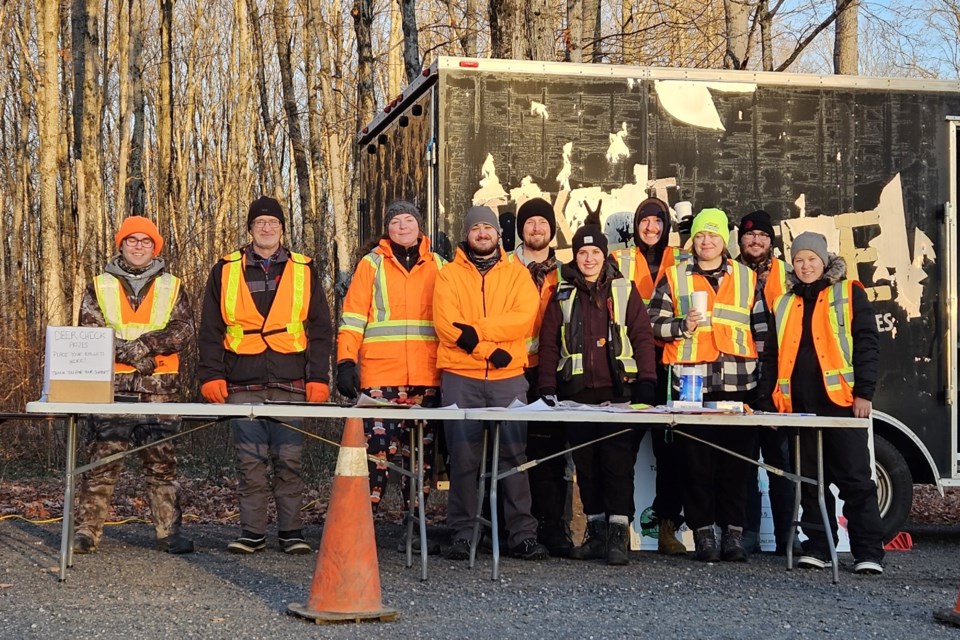Dozens of Sault College students, many of them enrolled in Fish and Wildlife and other related programs, gained some valuable experience on St. Joseph Island this month for the school’s annual deer check station.
Hunters submitted 106 harvested white-tailed deer from the island (Wildlife Management Unit 45) throughout the nine-day outing, which was three more deer than last year.
With the supervision of Wildlife Biology Management instructor Greg Cull, as well as college technologist Brittny White, students collected all kinds of biological data, which will be submitted to the Ministry of Natural Resources and Forestry. They also sampled several deer that were harvested on the mainland.
The MNRF will use the college's data when they set the antlerless deer tag quotas for the wildlife management units on the island and the mainland, according to Cull.
“You’re getting added value information you wouldn’t necessarily get,” Cull said. “MNRF will look at the harvest data and decide if there are some trends in the population. If they think there’s a decline, they can curtail some of that harvesting to try and rebuild that population.”
Data collected includes information such as:
- Dressed weight of the deer harvested
- Antler beam diameter for bucks sampled
- Number of antler points for bucks sampled
- Age of deer sampled
- Signs of lactation (evidence the doe may have had a fawn in the spring) for does sampled
- General location of where the deer was harvested
- DNA tissue samples for the Trent University genetic research project
- Number of deer seen by the hunter while hunting
While he was initially hoping to see upwards of 200 deer submissions, Cull is still thrilled with this year’s turnout.
“It was incredible to see how many local people, hunters and non-hunters alike, dropped in to see our deer numbers, which we displayed on a board and which we updated as we sampled deer,” he said. “There is a lot of enthusiasm out there about what we are doing.”
“It has turned into a pastime and cultural event for Islanders and others to check out the deer check numbers,” he added. “The students also loved it, they gained a lot of valuable experience.”
Of the 106 evaluated white-tailed deer, there were 84 bucks, 13 does, and nine fawns.
The heaviest buck weighed in at 201 pounds, while the heaviest doe and fawn were recorded at 116 and 74.5 pounds respectively. This year’s heaviest were all lighter than last year’s heaviest in each category. The most points on a buck was 12.
To encourage more hunter participation, random prizes were drawn for fawn, adult doe, and adult buck categories “thanks to the excellent partners” at the St. Joseph Island Hunters and Anglers Association and the Algoma Fish and Game Club, said Cull.
“Next year, we’re looking at a Youth Hunter category and more prizes as well,” he said.
The check station team is also considering setting up another college check station in Echo Bay next year before they return to St. Joseph Island, with the hope of obtaining more deer data on the mainland.
